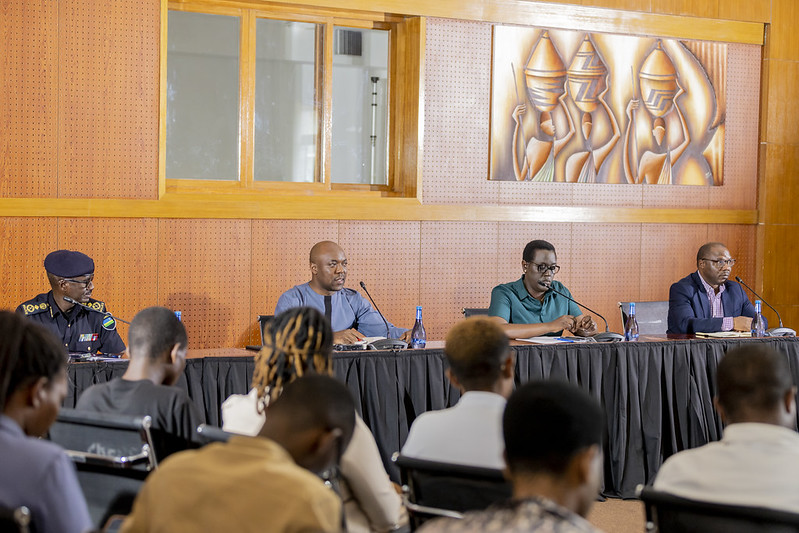 Day four of what increasingly looks like a national disaster, the government, which up to now has poured all available resources into supporting those who are bearing the brunt of the human cost, is beginning to gauge what will be needed to rebuild lives. With more heavy rains feared on the way, communities are urged to stay watchful, and pay heed to instructions from emergency services.
Day four of what increasingly looks like a national disaster, the government, which up to now has poured all available resources into supporting those who are bearing the brunt of the human cost, is beginning to gauge what will be needed to rebuild lives. With more heavy rains feared on the way, communities are urged to stay watchful, and pay heed to instructions from emergency services.
The speed with which the government responded, virtually immediately to the disaster, has allowed people to mourn their loved ones, without having to worry about where they are to sleep, what they are to eat, and what would happen to them, if the heavens opened to such devastating effect once again.
First to reassure the affected communities, was the head of state, President Kagame, who promised to personally take charge of the response.
As with every major incident, a command post was set up to coordinate the response from all government departments and agencies. The army was mobilised to support the emergency services.
The government wanted those affected not just to know, but to see and feel that the entire state stood with them in their hour of need, and that although no one else can feel it as they do, nevertheless their tragedy was not theirs alone, but was shared by the nation.
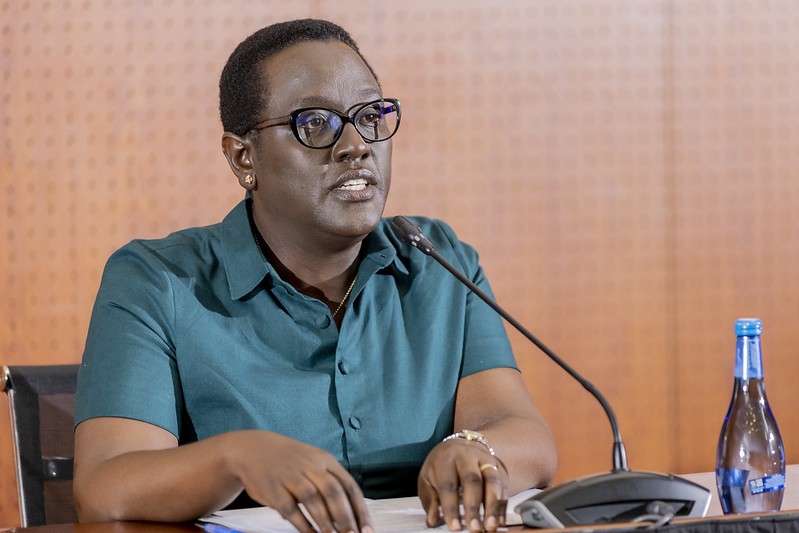
MInister Marie Solange Kayisire
“As a government, we will continue to see that in as much as is possible, people have everything they need” said the Minister for Emergency Management (MINEMA), Marie-Solange Kayisire, at Saturday’s press conference, “but we also want them to know that we are with them, as they come to terms with the difficult emotions, of what they have gone through.”
Alongside minister Kayisire, at the press conference, were the Minister for Local Government (MINALOC), Jean-Claude Musabyimana, the Minister of Infrastructure (MININFRA), Dr Ernest Nsabimana, and representing the Rwanda National Police (RNP), Commissioner of Police, John-Bosco Kabera. All four had spent most of week with the communities in the affected areas, as did the prime minister, Edourd Ngirente.
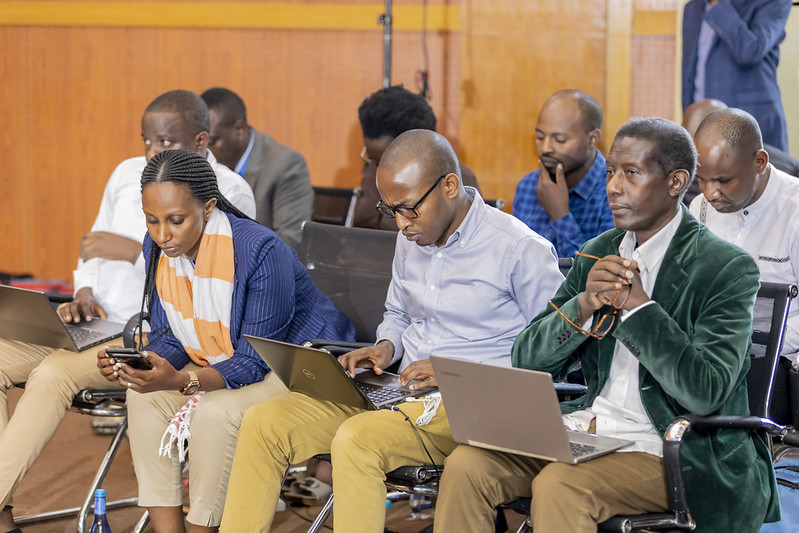
The practical challenges are staggering. In twenty-four hours, 130 people lost their lives, unable to resist the strong waters, with many more injured, some seriously. It was the biggest loss of life recorded in recent memory, said Minister Kayisire. It was feared that the toll would rise even further, but it has mercifully stuck at 131. One person is still missing, unaccountable for.
There is now only water, where 5,500 houses once stood. The damage or complete destruction, included fifty schools, fourteen major roads, electricity transmission centres and water treatment plants.
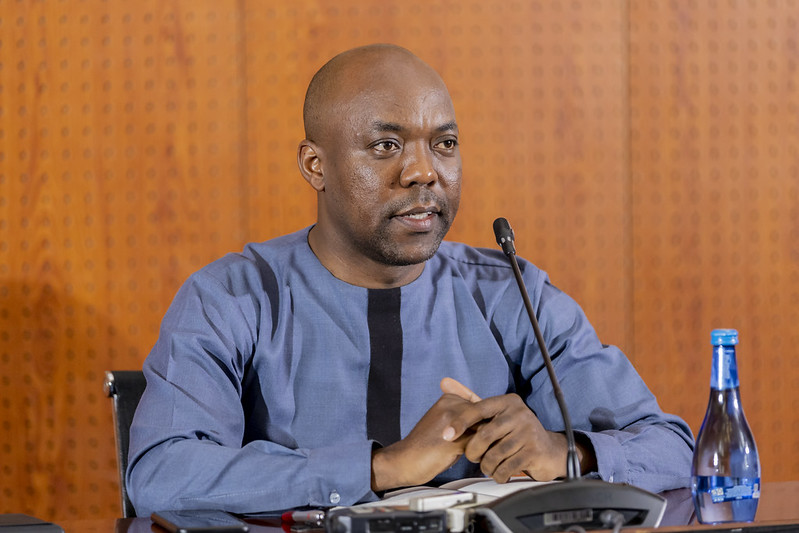
Minister Ernest Nsabimana
Different teams, working flat out, twenty-fours a day, have managed to restore some of these services. So far, Dr Nsabimana outlined, 9 of the 14 roads damaged have already been repaired and opened, so are six of the eight damaged water treatment plants, and 5 of the 12 electricity transmission centres. Some parts of the infrastructure, like bridges for instance, will need to be completely reconstructed. MININFRA estimates that all in all, the country will need upwards of $110million, to repair, reconstruct and strengthen various parts of the infrastructure, with some of them expected to be completed over the long term.
The aim is not only to bring the damaged services back into use, but where possible, to reconstruct them, to withstand violent weather conditions, which are expected to be a feature of climate change.
For now, however, the focus remains on getting the basic needs of food, shelter and clothing, to people many of whom have lost everything.
People whose homes escaped the floods, are urged to remember that more rains are likely, and to remain vigilant, and inform the authorities if they have reason to believe that their houses too might be in danger of being swept away.
For the others, the government strongly advises against the temptation to return to their properties, and wait for the official all clear. With the government determined to learn the hard, tragic lessons, resettling people displaced by the flood, will be a long term undertaking, with some areas unlikely to be deemed suitable for housing again.
The ministers expressed their appreciation of how people have not only worked closely with the authorities, but have come to the aid of their neighbours, when needed. They urged people to continue to be watchful over each other, and to call for the authorities if they notice someone in need of assistance.
“There are clear instructions” said minister Musabyimana, “people need only express the need for help, and the structures are there to provide it.”
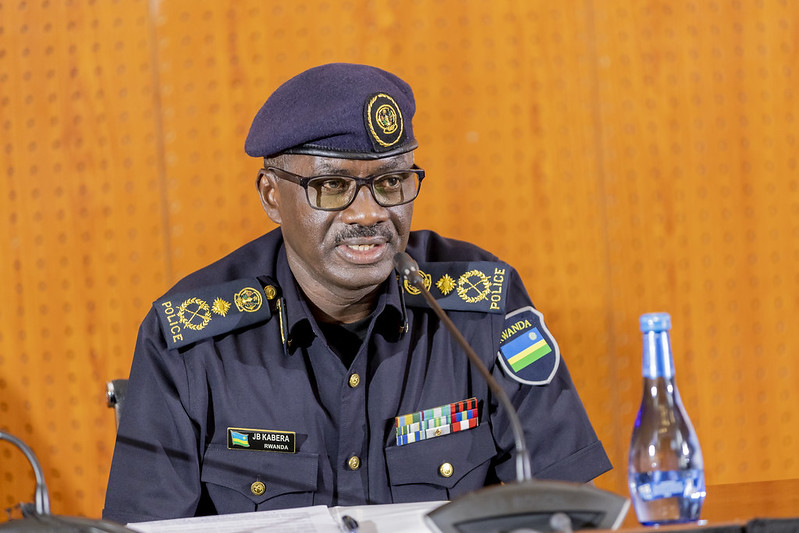
Commissioner of Police John Bosco Kabera
Commissioner Kabera, whose officers were among the first response teams, involved with everything, from rescuing people stranded in their houses, searching for the missing, delivering food, as well as their normal police duties, emphasised the importance of heeding safety advice from the authorities. “So far, people have been very helpful in following safety instructions, it is important they continue to do that” he pleaded.
The government will continue to look after people’s needs, for as long as necessary, said Minister Kayisire, but she wanted to thank the many people, who, in accordance with Rwandan custom of coming to the aid of others in need, have expressed a wish to donate what they can to help. To date, Rwf11 million (roughly $11,000) has been raised in one day.
To make sure all donations reach the intended recipients, MINEMA has opened a secure route for people to send their donations.
The weather that has caused such devastation in Rwanda is attributed to climate change, and has affected the country’s neighours, in some cases with even more deadly force, than in Rwanda. To the north, in the Kisoro region of Uganda, at least six people were reported dead, and roads destroyed in heavy rains. In neighbouring Democratic Republic of Congo (DRC), floods left over 200 dead, with the survivors unable to count on the kind of help their Rwandan neighbours have come to expect.

